#women in wwii
Text
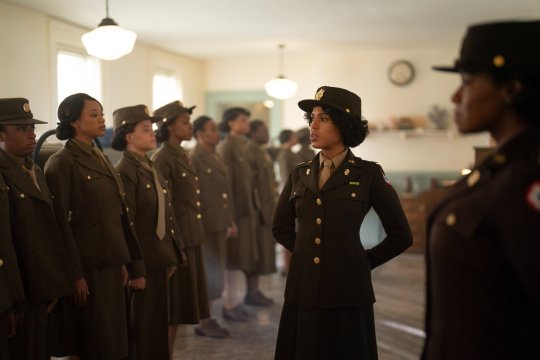

Our first teaser for the Six Triple Eight movie was included in Netflix's 2024 upcoming releases promo!!
For those who don't know, the Six Triple Eight is about the 6888th Central Postal Battalion which was the all POC regiment of the Women's Army Corps during World War II. They served in England sorting through the massive backlog of mail that had accumulated. Receiving mail from home was such an important morale boost for the men and high morale wins wars so sorting this mail was a priority. It was a nearly impossible task that the Army predicted would take them years to accomplish but they completed the task in half the time, processing 17 million pieces of mail and sending them to soldiers awaiting news from home. They worked in cold, dirty, dark rat infested aircraft hangars with broken windows. They were so good at their work that the unit was sent to several other areas to do the same thing. The unit was active from 1945 to 1946 and consisted of 855 women under the Command of Major Charity Adams, Captains Mary F. Kearney and Bernice G. Henderson. Their nickname was “Six-Triple Eight" and their motto was “No Mail, Low Morale."
I'm so excited for this film, you have no idea. An entire movie completely focused on telling the story of women. And not just women, black women! It's so exciting! And it looks fantastic just from this short teaser. I know the historical consultant of the show personally and she knows WAC history better than anyone and it definitely shows. The uniforms are pretty perfect. The only mistake I've seen so far, which is in a behind the scenes photo, is the utility bag (their purse) is on the wrong side. But that's a nit picky complaint from me I can overlook. But even the shots are so good!! They're recreating at least one original image I can think of. Which is so cool. God I'm so excited!!!!
Here are some original images of the 6888
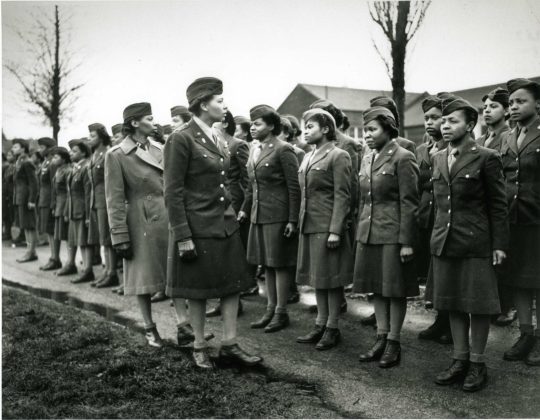


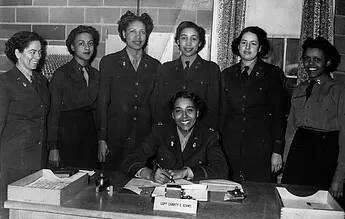
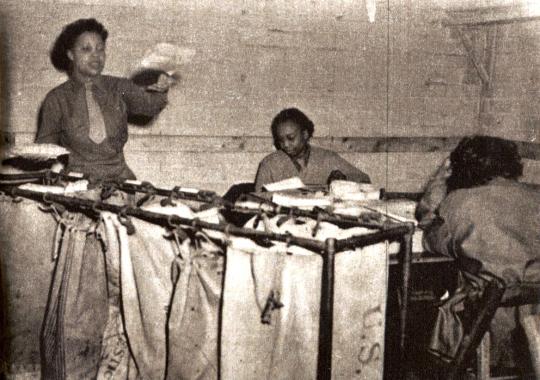


#wwii#women in wwii#wac#women's army corps#six triple eight#6888th postal battalion#black history#badass women in history#mod post
295 notes
·
View notes
Text
Digging into some Masters of the Air stuff and discovered that Robert Rosenthal's wife, Phillis Heller, served as a WAVE and was a fellow lawyer. They met on the ship taking them to the Nuremberg Trials, where they both served as staff attorneys.
14 notes
·
View notes
Text
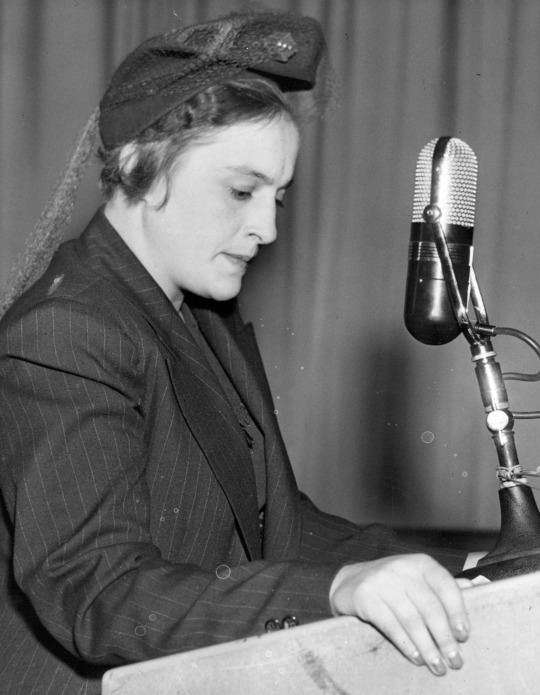
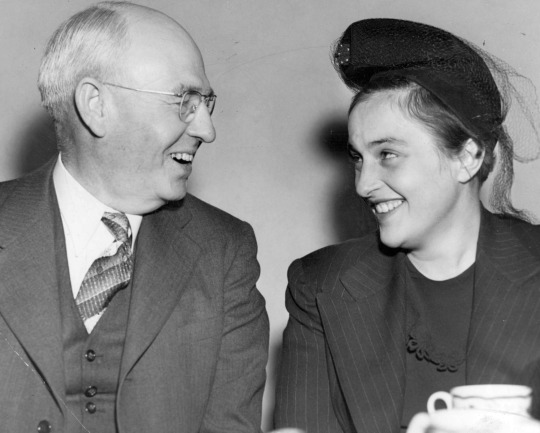
Lady Death Visits Minneapolis
In September 1942, 26-year-old Soviet sniper Lyudmila Pavlichenko visited Minneapolis with three other European war heroes for a three-day tour of the Twin Cities to help sell war bonds and stamps. Pavlichenko, known to her enemies as “Lady Death” and often called “Girl Sniper” by the press, was one of 2,000 female snipers in the Red Army during World War II, of which only 500 survived. She had a kill count of 309, a record for a female sniper to this day. Her United States and Canada tour, which began after a shrapnel injury took her out of combat, was part of the Soviet Union's attempts to convince the other Allies of World War II to open a second front against Nazi Germany. Following the war, she worked as a research assistant at Soviet Navy headquarters. She died from a stroke in 1974 at the age of 58.
"Clean cut in appearance and straightforward, she can't quite conceive why all the fuss is being made over her." In Russia, she explained, all women are fighting. Minneapolis Star, September 28, 1942.
Read her memoirs or learn more about her in the 2015 Russian film, Battle for Sevastopol.
Photos of Lyudmila Pavlichenko during her visit to the University of Minnesota in September 1942, from the Minneapolis Newspaper Photograph Collection in the Hennepin County Library Digital Collections.
#lyudmila pavlichenko#snipers#female snipers#women in WWII#Red Army#Soviet Union#World War II#WWII#Minneapolis#Minnesota
76 notes
·
View notes
Text
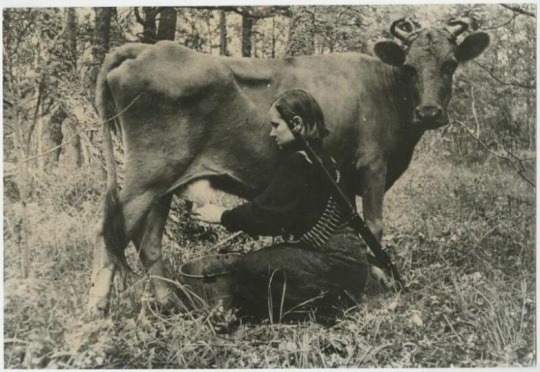
Soviet partisan. Photo by Yakov Davidson, Ukraine, 1943.
8 notes
·
View notes
Text
The Women Who Helped Win World War II

During World War II, women played a crucial role in the war effort, both on the front lines and on the home front. From pilots to factory workers, women took on a wide range of roles that were traditionally reserved for men.
One of the most well-known groups of women in World War II were the Women Airforce Service Pilots (WASPs). These women were trained to fly military aircraft in non-combat roles, freeing up male pilots for combat duty. Over 1,000 women served as WASPs, flying over 60 million miles in total. Despite their contributions, the WASPs were not recognized as veterans until 1977.
On the home front, women worked in factories, producing the planes, tanks, and other equipment that was needed for the war effort. The iconic "Rosie the Riveter" character, which was popularized in propaganda posters during the war, represented the millions of women who worked in the factories.
In addition to their work in the military and industry, women also served as nurses, spies, and codebreakers during the war. Women played a vital role in cracking the German Enigma code, which was instrumental in the Allied victory.
The contributions of women in World War II were often overlooked and undervalued at the time, but their efforts paved the way for greater opportunities for women in the workforce and the military. Today, we remember and honor the women who helped win the war and paved the way for future generations of women.
4 notes
·
View notes
Photo

“Female railroad workers employed during wartime eat in the break room of the Chicago and Northwestern Railroad in Clinton, Iowa.” Photographed by Jack Delano in June 1943.
15K notes
·
View notes
Text

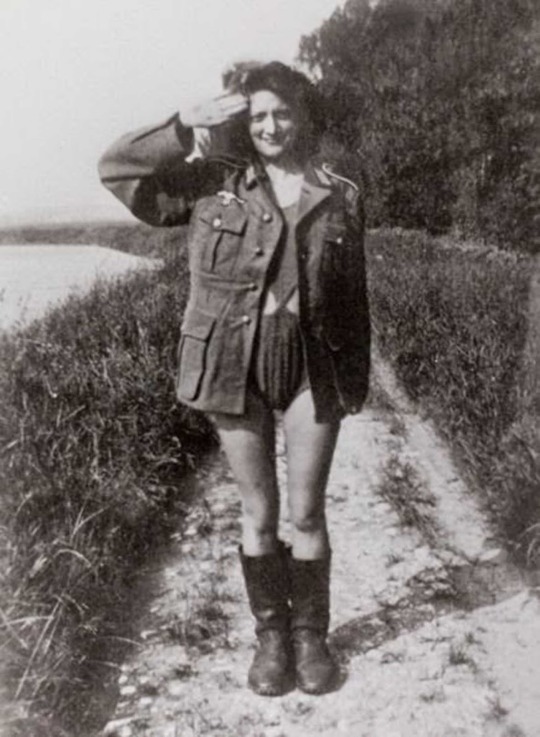
French girls wearing their German boyfriends uniforms during World War 2. The photo on the right was found on a German POW.
#historical photos#history#historical#ww2#world war 2#world war ii#second world war#ww2 photos#wwii#wwii photos#ww2 history#wwii history#1940s#1940s women#1940s photos#ww2 women
404 notes
·
View notes
Text

RAF Veronica X a Dutch ferry pilot for the ATA 22nd, February, 1943.
204 notes
·
View notes
Text

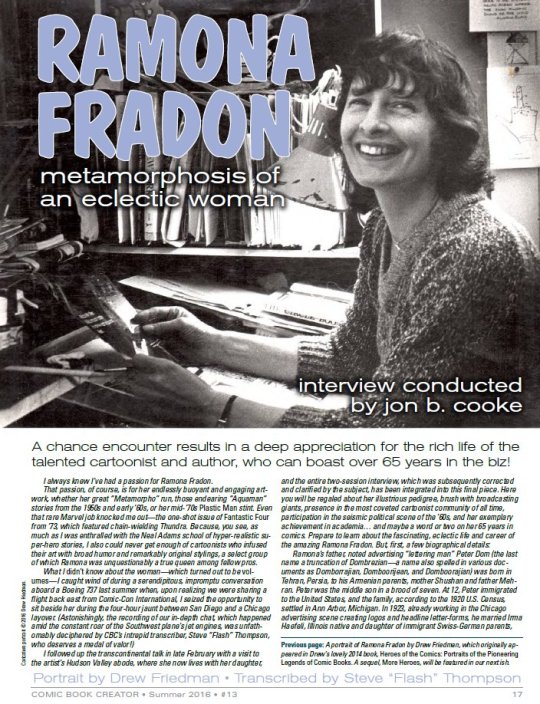
Comic Book Creator: Ramona Fradon
#Comics#DC Comics#Ramona Fradon#Comic Book Creator#Metamorpho#Aquaman#Plastic Man#Super Friends#The New Yorker#WWII#CBS#Radio#Faust#RIP#Women Of Comics
140 notes
·
View notes
Text
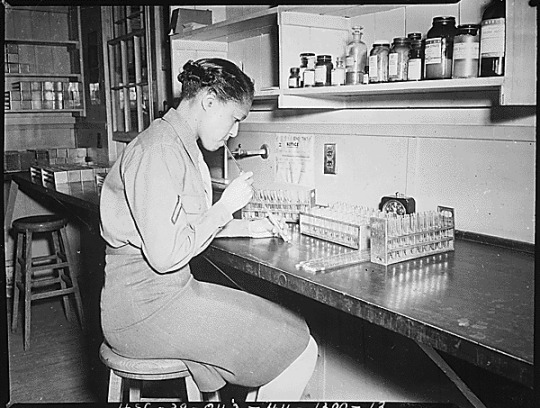
"Pfc. Johnnie Mae Welton, Negro WAC, laboratory technician trainee, conducts an experiment in the serology laboratory sf the Fort Jackson Station Hospital, Fort Jackson, SC."
Record Group 111: Records of the Office of the Chief Signal OfficerSeries: Photographs of American Military Activities
This black and white photograph shows Pfc. Johnnie Mae Walton, an African American woman in the Women’s Army Corp, sitting at a lab table. She wears a military uniform and her hair is tied back. She appears to be blowing through a straw into a test tube. Three racks of test tubes are on the lab table before her.
130 notes
·
View notes
Text


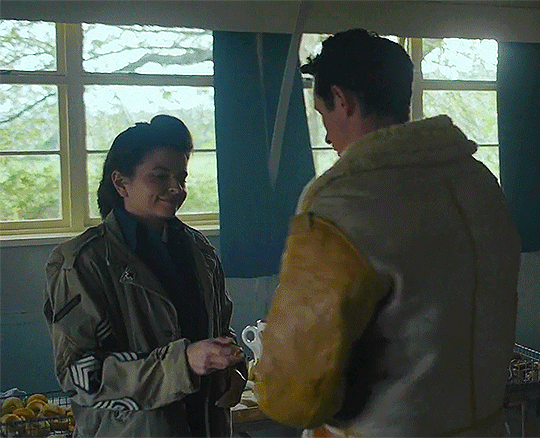
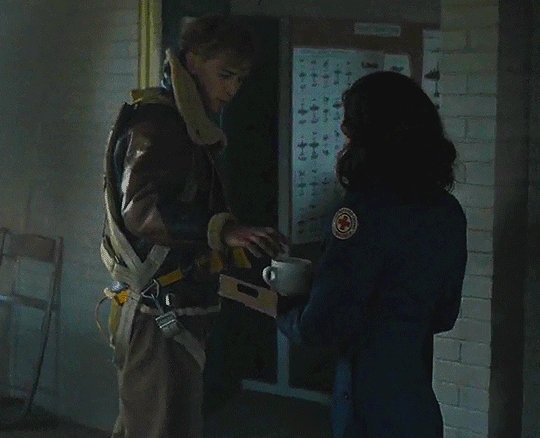


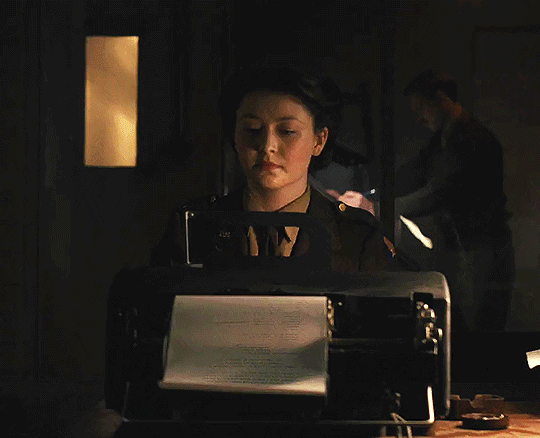
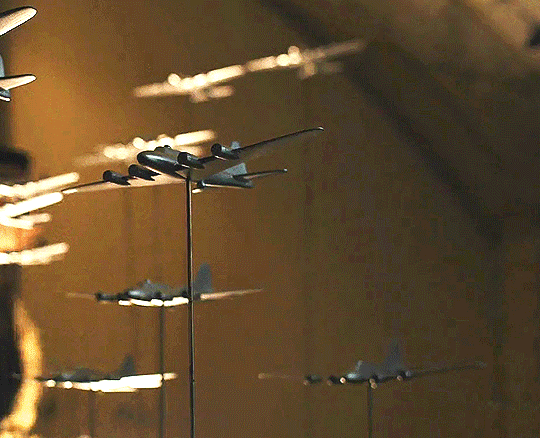
The Women of Masters of the Air -1x02 and 1x02
Women's Land Army
Red Cross Clubmobile
Women's Army Corps
#period dramas#masters of the air#hbo war#wwii#women in wwii#wac#women's army corps#women's land army#uk land army#red cross clubmobile#red cross#my gifs#mod post#the women of masters of the air
299 notes
·
View notes
Text
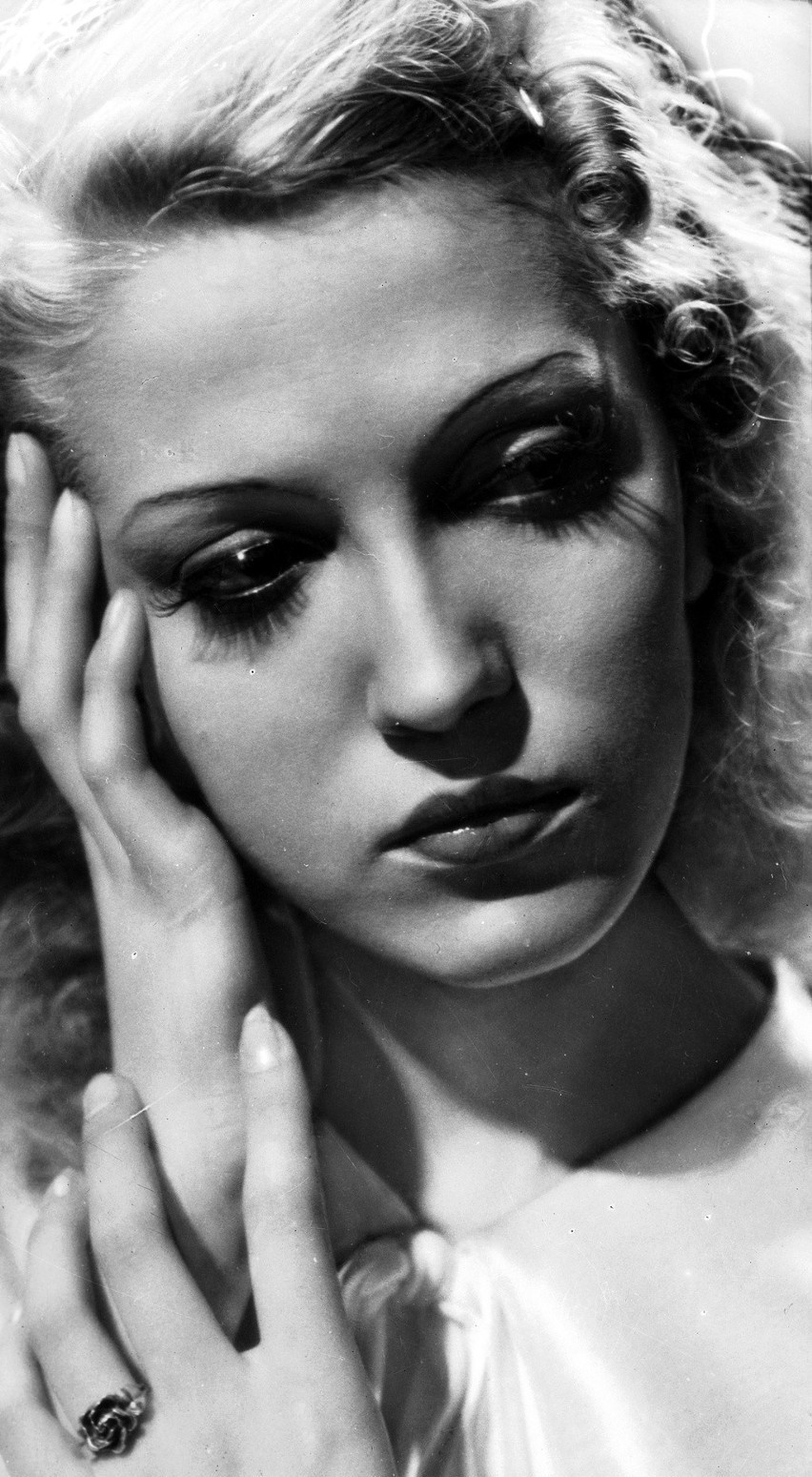









Tamara Wiszniewska (1919-1981) - Polish actress
Tamara Wiszniewska was born on December 19, 1919 in Dubno, Poland (now a region in western Ukraine) on the banks of the Ikva River. It was here that she spent her younger years during which she picked up dancing, which eventually led her to her career in film. In her 1981 obituary in the Democrat & Chronicle, it was reported that Tamara, at age 15, “Was a ballet dancer, when German film director Paul Wegener discovered her and gave her a role in the historical film, August der Starke (August the Strong)” which premiered in 1936. This German/Polish co-production is a biographical look into the life of Augustus II, ruler of Saxony and Poland-Lithuania from 1694-1733. Although Tamara played only a small role it marked her debut and eventual rise to fame within the Polish film industry.
Following her appearance in August der Starke, Tamara appeared in thirteen other films between 1936 and 1939, including Trójka Hultajska (The Trio Hultajska, 1937), Ordynat Michorowski (Ordinate Michorowski, 1937), and Kobiety nad Przepaścią (Women Over the Precipice, 1938). Wladyslaw (Walter) Mikosz, Tamara’s future husband, produced two of these films. In an interview, Tamara and Walter’s daughter, Irene, states that, "The two met because of their film careers, and were married [late that same year] in 1937".
Life for the Mikoszs was happy for a time. Tamara continued to pursue her acting career through 1938 and 1939 and had welcomed a new born daughter into the world alongside her husband, Wladyslaw. Unfortunately, these happy times did not last long as the Mikosz family experienced the rise of Nazi Germany and their occupation of Poland in 1939 during World War II. The following excerpt from an interview with Tamara in a 1974 Times Union tells how drastically their lives were changed:
"I always played a rich spoiled girl who had lovely clothes, and for a short time I lived that kind of life too. It was a short, beautiful life that ended when the Germans took over Poland in 1939. We were wealthy and the toast of the town then. We’d go to Prague and Vienna just to see an opera or to play in the casinos. When the Germans came, my intuition told me I should have something on me to exchange. I sewed my jewelry into my clothes. Later, it bought us passes to freedom and bread so we were never hungry."
The German occupation of Poland during World War II brought then “beautiful” life of the Mikosz family to an end. Gone were their illustrious careers in film and the rewards that such a life had brought to them. In a later interview, Irene mentioned that her mother "was preparing to sign a contract for a film career in Hollywood, but Hitler’s invasion of Poland derailed the plans". Sadly, Tamara’s last appearance on the silver screen was in 1939 prior to the invasion of Hitler’s Germany; she never again starred in any films.
Although her dreams had been crushed, Tamara and her family did not lose hope. They made the best of their current situation, and were able to survive by selling the fruits of their labors that they harvested during their days in the film industry; their lives had been consumed with a fight to survive rather than a dream to thrive. However, not being ones to live quiet lives, the Mikoszs volunteered for the Polish Underground, the exiled Polish government that fought to resist German occupation of Poland during World War II. As civilians with backgrounds in film, Tamara and Walter were most likely engaged in spreading Polish nationalistic and anti-German propaganda. Such efforts of the civilian branch of the Polish Underground was in support of what Jan Kamieński refers to as "small sabotage" in his book, Hidden in the Enemy's Sight: Resisting the Third Reich from Within: "In contrast of major sabotage, the idea of small sabotage was to remind the German occupiers of an enduring Polish presence, to ensure that they felt a constant sense of unease and generally undermine their self-confidence". While attending to these duties within the Underground, the Mikosz family was separated and shipped off to separate countries: Tamara and her daughter, Irene, to Czechoslovakia (where Tamara’s parents had been sent) and Walter to Bavaria. The family was not reunited until 1945, when they were sent to the same refugee camp in Bavaria. The Mikoszs remained in the Bavarian refugee camp until the year 1950, in which they emigrated to the United States of America. Tamara and Walter lived quiet lives in Rochester, NY after arriving from a war-torn Europe, and did so until they passed away.
Although they have long since passed away from this Earth, the stories of the Polish film star, Tamara, and her film-producer husband, Wladyslaw Mikosz, will live on so long as there are people around to tell it.
#history#history crushes#submission#tamara wiszniewska#polish#actress#film history#1930s#30s#old hollywood#women in film#women in history#poland#wwii#world war 2#ww2#ww2 history#old movies#old phography#20th century
124 notes
·
View notes
Text
The Women's Airforce Service Pilots (WASP): Soaring Through Gender Barriers 🛩🐝
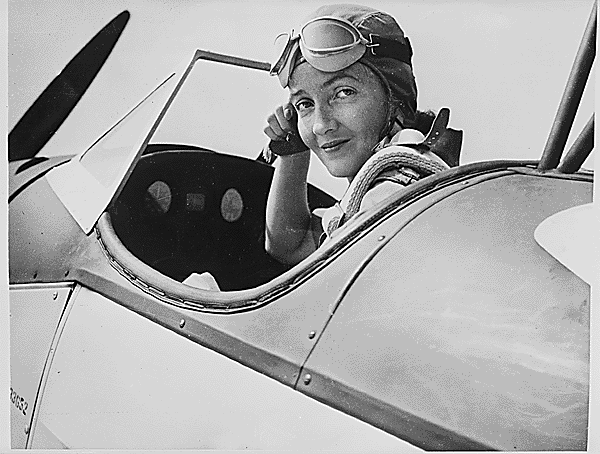
During World War II, while the world battled on various fronts, a quieter revolution took flight in the United States. The Women's Airforce Service Pilots, or WASP, were a pioneering group of female aviators who defied traditional gender norms, proving that women could excel in roles historically reserved for men.
Origins of the WASP
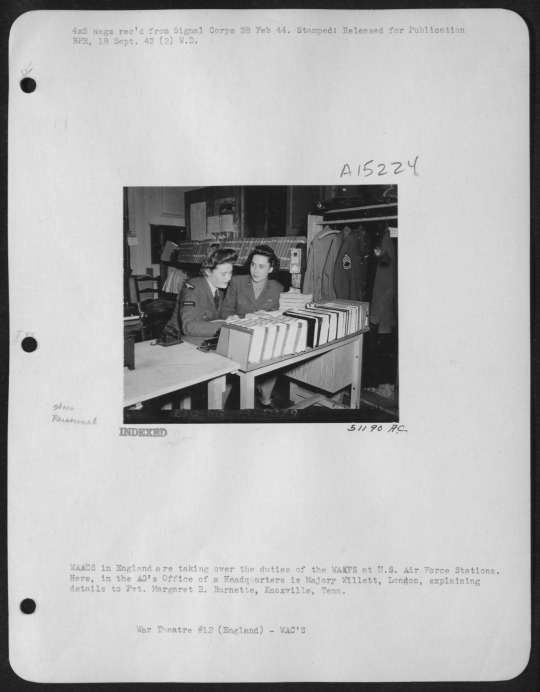
With many American men serving overseas, the country faced a need to tap into underutilized domestic resources. The WASP program, initiated in 1943, merged two existing women's flying programs: the Women's Flying Training Detachment (WFTD) and the Women's Auxiliary Ferrying Squadron (WAFS). These women, under the guidance of aviators like Jacqueline Cochran and Nancy Love, would play a critical role in the war effort.
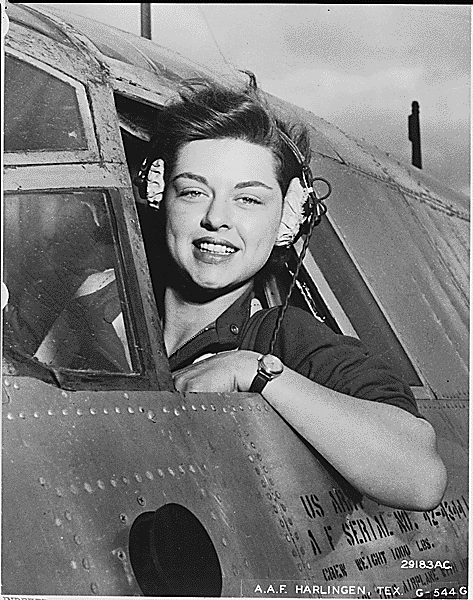
Duties and Contributions
The WASPs were trained pilots who contributed in non-combat roles. They ferried military aircraft across the country, tested planes, instructed male pilots, and even towed targets for live anti-aircraft artillery practice. They fulfilled the non-combat roles formerly occupied by male pilots, so more male pilots were available for combat roles. Women were not allowed to fly combat missions until [many years later, in 1993.. By the end of the war, WASPs had flown every type of military aircraft, logged over 60 million miles, and transported nearly 12,650 aircraft of 78 different types.
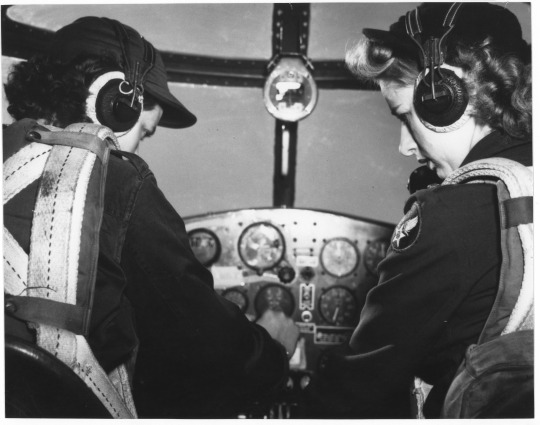
Challenges and Gender Biases
Despite their significant contributions, WASPs constantly faced skepticism and discrimination. They weren’t considered members of the military but were seen as civil service employees. They had to pay for their own uniforms, lodging, and sometimes even their way home after the end of their service. If a WASP pilot died during service, her burial costs fell on her family or fellow pilots.
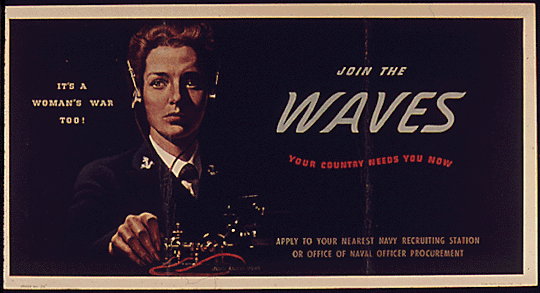
Recognition and Legacy
In 1977, after years of advocacy by WASP veterans, President Jimmy Carter signed legislation granting WASP pilots veteran status. Later, in 2009, they were awarded the Congressional Gold Medal for their service, sacrifice, and pioneering spirit. The legacy of the WASP program not only paved the way for women's integration into the U.S. Air Force but also demonstrated the capabilities of women in high-pressure, technical roles.
230 notes
·
View notes
Text
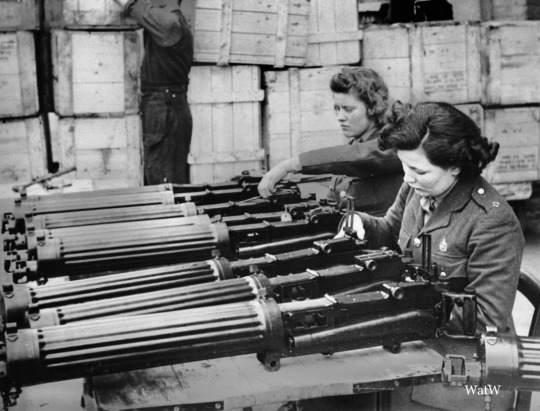
Female members of the British Army Department of Armaments inspect a consignment of 7.7mm Vickers machine guns (Vickers .303) received from the United States under the Lend-Lease Act - 1940
#world war two#1940s#worldwar2photos#history#ww2#ww2 history#wwii#world war 2#wwii era#ww2history#women at work#munitions#1940#england#great britain#lend lease#Vickers#machine gun
323 notes
·
View notes
Text
A Woman’s War
Personnel shortages led the military to enlist more than 300,000 women volunteers during World War II. All of the military services created posters that encouraged women to join up. Thousands were recruited to serve as nurses. But many more chose to enter one of the women’s auxiliaries formed by the services.
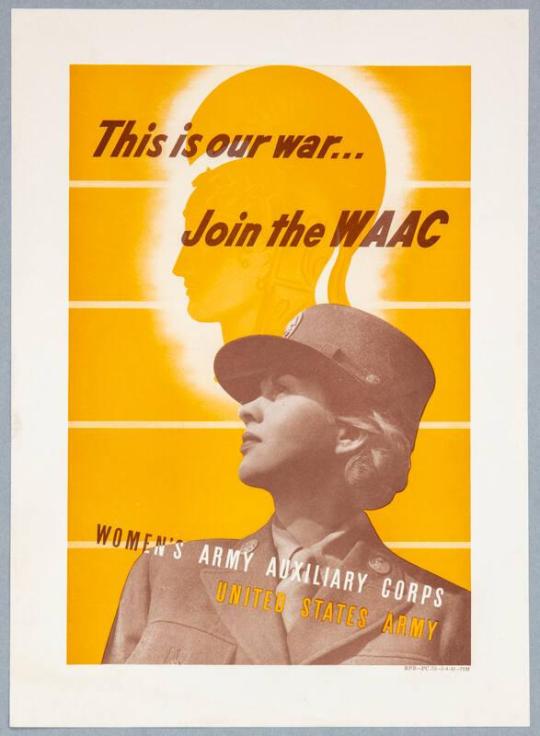
Over 150,000 served in the Women’s Army Corps (WAC/WAAC) in jobs ranging from telephone, radio, and teletype operator to cryptographer, medical technician, sheet metal worker, and aircraft mechanic.
The Navy recruited over 80,000 WAVES (Women Accepted for Volunteer Emergency Service). They worked as clerks, secretaries, cryptologists, air traffic controllers, meteorologists, and translators.

The Marine Corps Women’s Reserve, established in February 1943, enrolled 23,000 women during the war.
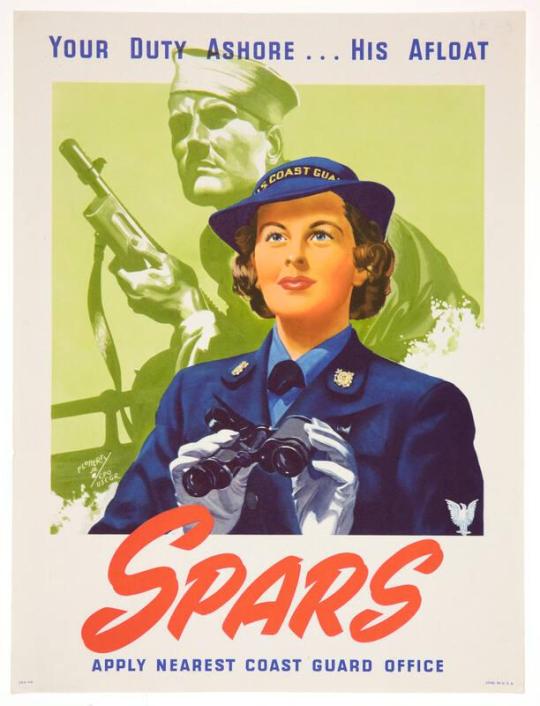
While the Coast Guard Women’s Reserve enlisted more than 10,000 between 1942 and 1946.
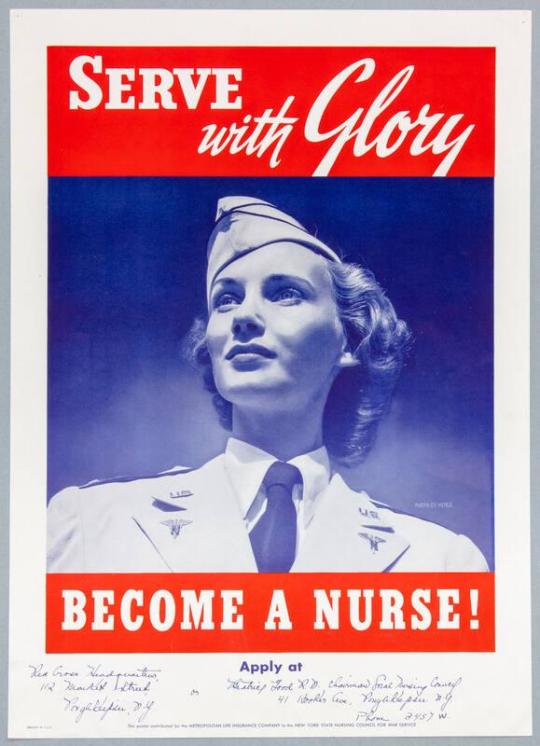
Like some of the wartime posters that encouraged women to the join the industrial workforce, military recruitment posters sometimes offered mixed messages. Prevailing biases regarding gender roles dictated that women not serve in combat roles.
Learn more about this collection: https://fdr.artifacts.archives.gov/advancedsearch/Objects/invno%3AMO%202005.13.17*/images?page=1
Follow along throughout 2024 as we feature more #TheArtOfWar WWII posters from our Digital Artifact Collection.
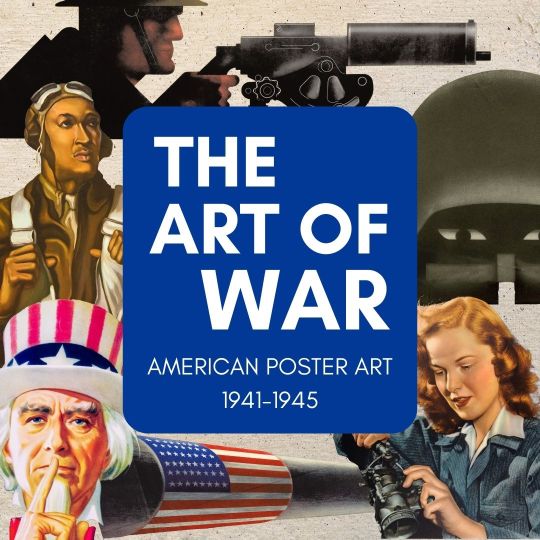
100 notes
·
View notes
Text

"During the tension of World War II, a revue has dressed one of their showgirls in a gas mask and helmet in addition to a sexy outfit."
Anonymous photographer, September 1939, England.
#1930s#old photos#women#*#30s#world war ii#b&w#black and white#showgirls#gas mask#photography#vintage#history#show girl#vintage style#vintage fashion#world war 2#wwii#ww2#world war two#30s style#1930s style#30s fashion#black and white photography#b&w photography#dance#dancer
135 notes
·
View notes